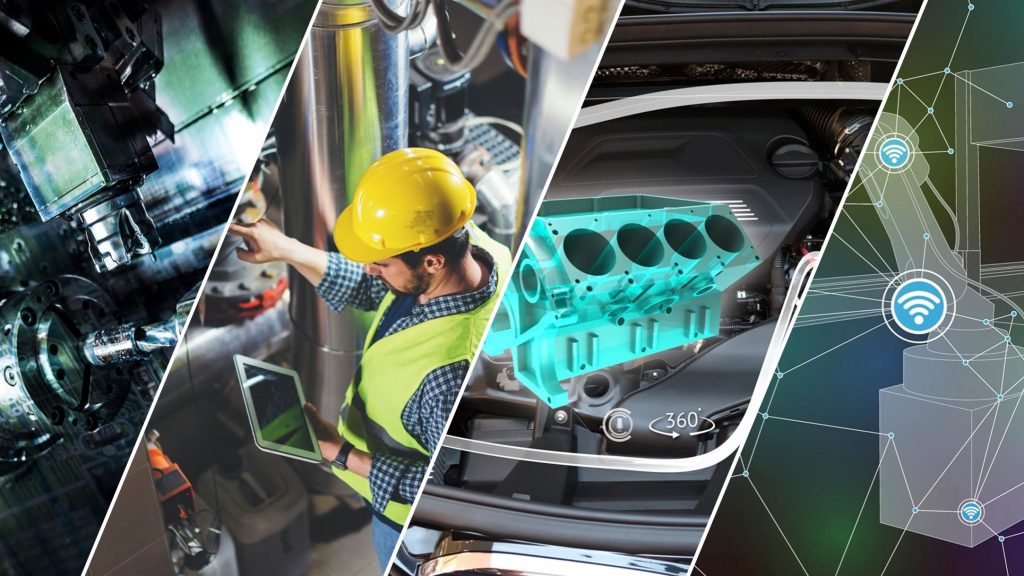
4 innovative technologies that transform enterprise asset management

Introduction
What does enterprise asset management (EAM) have in common with running shoes? Both have remained relatively unchanged over the last few decades, but are poised to evolve rapidly thanks to the latest technology. In the running world, smart shoes and related advances in fitness technology are transforming the running experience. Runners now have greater insights into their runs, such as real-time tips for correcting form and ongoing analysis of heartrate, average distance and pace, and more.
Just as technology is reshaping running, it is also transforming nearly every aspect of manufacturing, from business models to production methods. Enterprise asset management (EAM), a realm where older, manual processes and multiple disconnected systems are common, is a prime candidate for transformation.
As manufacturers enhance and unify their EAM approach, it’s important to consider both existing and emerging technologies. A robust approach is one that not only incorporates technology available today, but also accounts for future evolution. With that in mind, let’s examine four technologies that offer value in asset management scenarios—mobile, Internet of Things (IoT), machine learning, and mixed reality.
Mobile functionality
Gone are the days when employees must be at a station to determine the health and functionality of machines on the production line. Today, mobile devices and mobile-optimized EAM apps provide employees flexible access to the tools and insights they need, anytime and anywhere.
Through mobile devices, employees can view performance information, easily create work orders, and link service requests to specific locations or assets, making ad-hoc maintenance a simple task. In addition, equipping workers with mobile EAM tools supports increased responsiveness to changes happening in real time on the manufacturing floor.
Mobile EAM capabilities also empower younger workforce members with tools that make them more capable. Although they may not be as experienced as their predecessors, younger workers gain efficiency with data-based recommendations and alerts delivered on a mobile device they’re already familiar with using.
IoT-enabled assets
IoT is a high-potential technology that, in tandem with a modern EAM system, can digitally transform manufacturers’ processes. As an example, the combination of IoT with EAM supports automated, predictive maintenance scenarios, delivering efficiency gains and cost savings.
Often, maintenance is reactive and occurs after a failure that causes expensive unplanned downtime. IoT-enabled assets, however, generate ongoing, real-time data on their health and performance that can help prevent breakdowns. Analyzing this data reveals asset performance patterns, and these patterns support highly informed predictions about when an asset will need maintenance. If a maintenance need is predicted based on data coming in from an IoT-enabled asset, a work order can be automatically triggered in the EAM system, preventing an unplanned production stoppage.
Machine learning
When paired with asset management technology, machine learning enables manufacturers to gain an unprecedented level of insight into their operations. This insight provides manufacturers with the ability to implement intelligent maintenance recommendation systems. For example, a maintenance manager can ask the system if a part will need to be replaced after operating for 500 hours under varying workloads and stresses. Machine learning can intelligently answer that query, drawing on a deep understanding of performance data and multiple variables for that particular part at the company.
This technology also supports future performance goal and benchmark-setting, which in turn helps manufacturers understand how they are performing compared to industry averages (e.g. downtime). These kinds of insights are only possible when machine learning technology is integrated with an EAM system.
Mixed reality
Although full implementation in asset management scenarios is further out on the technology roadmap, mixed reality shows promise for supporting asset management processes. For example, specialized mixed reality headsets will make it easier to visualize asset maintenance procedures step-by-step, which enables less-experienced workers to execute more effectively. They will also help employees identify the right equipment for repairs, and will enable people in different locations to collaborate on a specific machine.
Closing
From mobile to mixed-reality, investing in an asset management solution that incorporates new technology is an important element of a digital transformation strategy. Dynaway EAM supports manufacturers’ digital transformation ambitions through their partnership with Microsoft.
Dynaway EAM, built on Microsoft Cloud technology, is a modern asset management solution that enables manufacturers to achieve operational excellence by improving machine effectiveness, reducing administrative burdens, and controlling costs. With built-in mobile functionality and IoT-ready capabilities, Dynaway is committed to delivering ongoing innovation, such as machine learning and mixed reality capabilities in the future.
The Dynaway EAM solution is just one example of how Microsoft and its partners are empowering digital transformation in manufacturing. To learn more about Dynaway EAM, check out the demo on Microsoft AppSource, or contact a sales representative.




